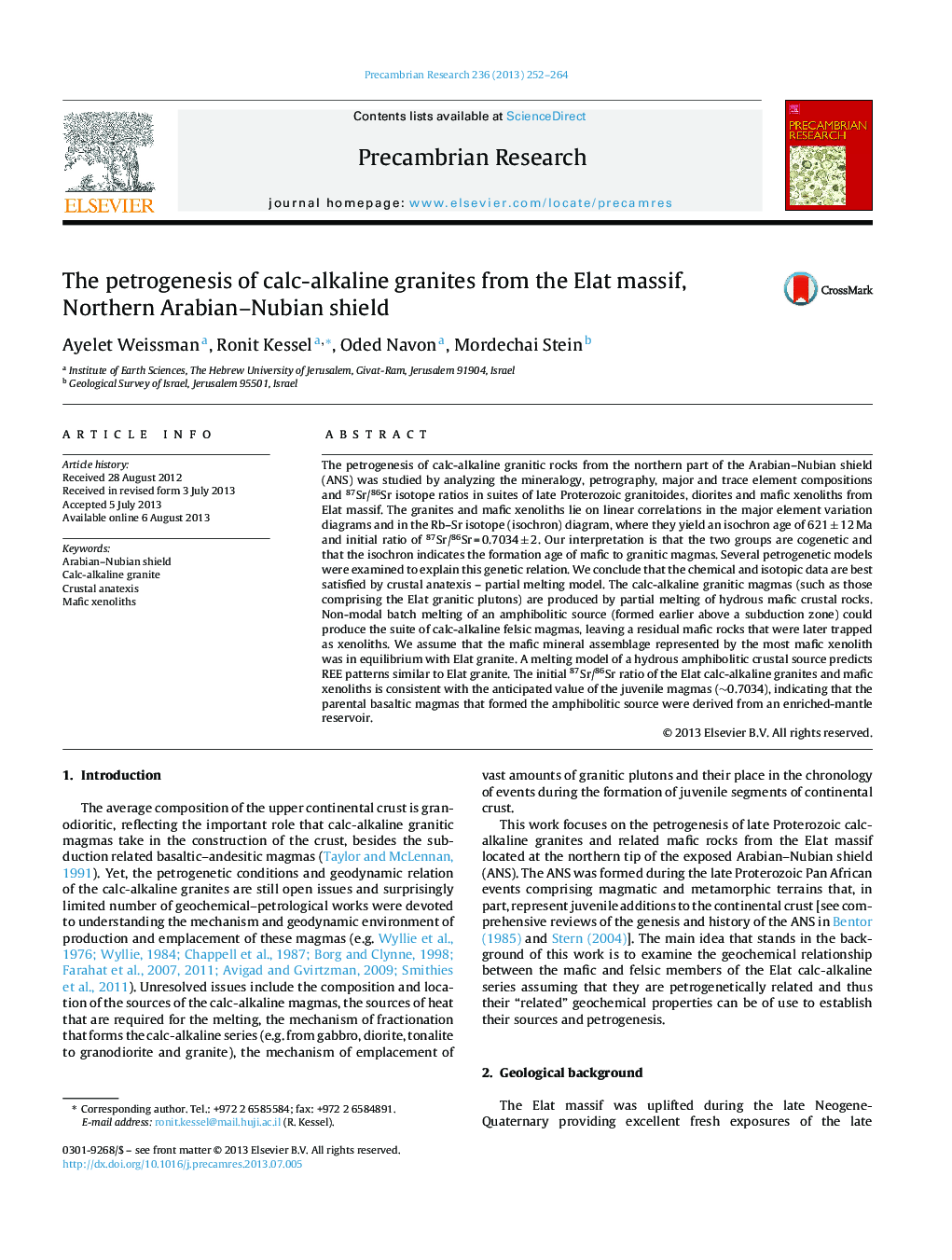| Article ID | Journal | Published Year | Pages | File Type |
|---|---|---|---|---|
| 4723177 | Precambrian Research | 2013 | 13 Pages |
•The Elat calc-alkaline rocks are genetically related and age 621 ± 12 Ma.•Custal anatexis of hydrous-mafic crustal rocks is proposed. Elat amphibolite is a potential protolith.•The parental basaltic magmas that formed the amphibolitic source were derived from enriched-ANS mantle.
The petrogenesis of calc-alkaline granitic rocks from the northern part of the Arabian–Nubian shield (ANS) was studied by analyzing the mineralogy, petrography, major and trace element compositions and 87Sr/86Sr isotope ratios in suites of late Proterozoic granitoides, diorites and mafic xenoliths from Elat massif. The granites and mafic xenoliths lie on linear correlations in the major element variation diagrams and in the Rb–Sr isotope (isochron) diagram, where they yield an isochron age of 621 ± 12 Ma and initial ratio of 87Sr/86Sr = 0.7034 ± 2. Our interpretation is that the two groups are cogenetic and that the isochron indicates the formation age of mafic to granitic magmas. Several petrogenetic models were examined to explain this genetic relation. We conclude that the chemical and isotopic data are best satisfied by crustal anatexis – partial melting model. The calc-alkaline granitic magmas (such as those comprising the Elat granitic plutons) are produced by partial melting of hydrous mafic crustal rocks. Non-modal batch melting of an amphibolitic source (formed earlier above a subduction zone) could produce the suite of calc-alkaline felsic magmas, leaving a residual mafic rocks that were later trapped as xenoliths. We assume that the mafic mineral assemblage represented by the most mafic xenolith was in equilibrium with Elat granite. A melting model of a hydrous amphibolitic crustal source predicts REE patterns similar to Elat granite. The initial 87Sr/86Sr ratio of the Elat calc-alkaline granites and mafic xenoliths is consistent with the anticipated value of the juvenile magmas (∼0.7034), indicating that the parental basaltic magmas that formed the amphibolitic source were derived from an enriched-mantle reservoir.
